Are you looking for a flower that is sure to bring some cheer and beauty into your outdoor area? Chrysanthemums might just be the perfect choice! These stunning blooms can add an incredible burst of color to any garden, and come in a variety of shapes, sizes, and colors. But before you plant them outside, there are a few things that you need to consider. In this blog post we’ll explore whether it is possible to successfully grow chrysanthemums outdoors – from the soil requirements and planting times to their particular climate needs. Keep reading for top tips on how to get your mums blooming beautifully!
Chrysanthemums
Chrysanthemums, often simply referred to as ‘mums’, originated in Asia and northeastern Europe. [1] They are particularly significant in East Asia, where they hold cultural and artistic importance. Chrysanthemums were first cultivated in China as a flowering herb as far back as the 15th century BC. The plant is mentioned in ancient Chinese writings as a medicinal herb, believed to hold the power of life. Later, the chrysanthemum was journeyed to Japan by Buddhist monks in AD 400. The Japanese were so taken by the flower that they decided to incorporate it into the imperial crest.
Chrysanthemums are a fascinating intersection of natural beauty, botanical history, and cultural significance. They hold a unique place in the botanical world and continue to captivate gardeners and flower enthusiasts alike.
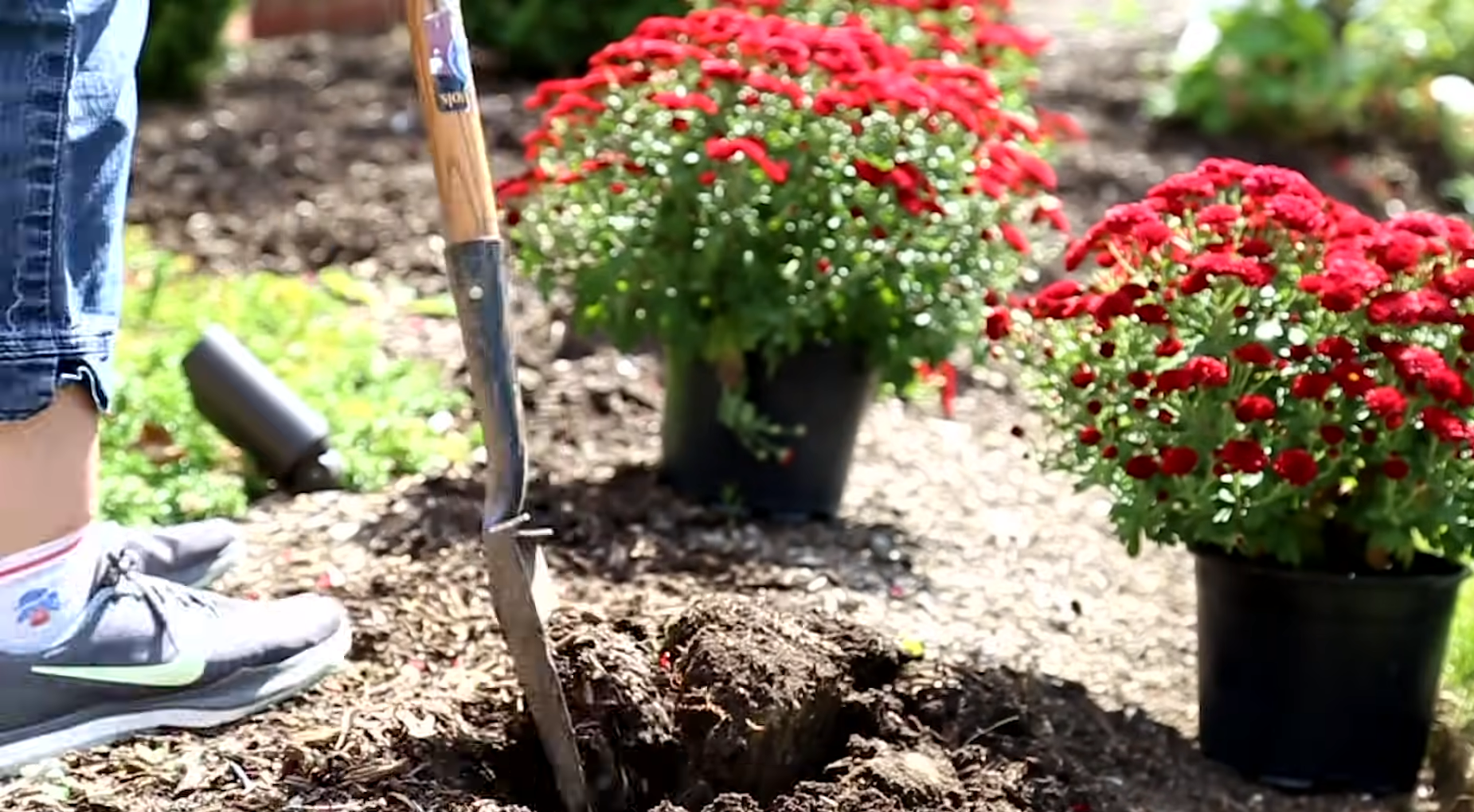
Characteristics & Types
Chrysanthemums display a variety of characteristics that make them a garden favorite. They are renowned for their vibrant colors ranging from yellow, bronze, red, pink, lavender, and even white. They typically bloom in the fall, providing a stunning display just as most other flowers are starting to fade. They are perennials, meaning they will return year after year, and they are relatively hardy, capable of withstanding cooler temperatures.
There are thousands of varieties of chrysanthemums, but they can be categorized into major types based on their flower forms:
- Irregular Incurve: These are the giant chrysanthemums you often see at exhibitions. Their outer petals curve down and inwards, but their inner petals curve upwards and inwards hiding the flower’s center.
- Reflex: The petals of these chrysanthemums curve downwards, creating a mop-like appearance. They are often used in florist’s bouquets or arrangements.
- Pompon: Just like the name suggests, these chrysanthemums form globe-shaped flowers with petals that are curved inwards. They are small and perfect for borders and beds.
- Anemone: These chrysanthemums have a raised center surrounded by a single or more rows of petals. They provide a beautiful contrast in the garden.
- Single and Semi-double: These chrysanthemums have flat flowers with a single or two rows of petals surrounding a visible center. They resemble daisies and are great for attracting butterflies to your garden.
Each type of chrysanthemum offers a unique charm, allowing gardeners to enjoy a diverse range of aesthetics within this single genus of flowers.
Popularity of Chrysanthemums as outdoor decoration
Chrysanthemums are a popular choice for outdoor decoration due to their vibrant colors and the timing of their blooming season. As autumn approaches and many other plants have finished their blooming cycle, chrysanthemums burst forth in a final, spectacular display of color that can revitalize the appearance of an outdoor space. Their hardy nature and wide variety of forms and colors make them incredibly versatile. You can find them adorning doorways in decorative pots, brightening up garden beds, and even gracing outdoor events like weddings or festivals.
Furthermore, chrysanthemums carry cultural significance in several societies. For instance, in Japan, they are celebrated with a Festival of Happiness. In other places, they are a symbol of death and are used in funerals or to honor loved ones in cemeteries. Whether for their beauty, versatility, or symbolism, chrysanthemums hold a cherished place in gardens and outdoor spaces worldwide.
Considerations Before Planting Chrysanthemums Outside
Before planting chrysanthemums outside, several factors should be taken into consideration to ensure the health and longevity of these vibrant plants:
- Location: Chrysanthemums thrive in areas that receive at least five hours of daily sunlight. They should be planted in a spot with good air circulation to avoid disease.
- Soil Condition: These plants prefer well-drained, fertile soil. Amending the soil with compost before planting can enhance its quality.
- Watering: Regular watering is essential, but overwatering should be avoided as it can cause root rot.
- Spacing: Proper spacing between plants is crucial to prevent overcrowding and promote healthy growth.
- Timing: Chrysanthemums should ideally be planted in the spring after the risk of frost has passed.
- Maintenance: Regular deadheading or removal of spent flowers encourages repeat blooming. The plants should also be pruned in early summer to keep them compact and delay flowering until autumn.
Steps to Successfully Plant Chrysanthemums Outside
With the above considerations in mind, the actual process of planting chrysanthemums outside is the next step. The method is relatively straightforward, but attention to detail can make a significant difference in the subsequent growth and flowering of your plants. Let’s walk through the steps to successfully plant chrysanthemums outside.
Planting Timing
The right planting time for chrysanthemums is crucial to their growth and can significantly impact their blooming. Ideally, chrysanthemums should be planted in the spring after the threat of frost has passed. This timing allows the plants to establish their root systems during the summer, which in turn enhances their survival during the harsh winter months. [2] Planting season matters because chrysanthemums require a sufficient growth period before they start to bloom. If planted too late, the plant may not have enough time to establish a robust root system, which can lead to weak growth and fewer flowers.
For chrysanthemums, planting on a cloudy day or in the late afternoon could be ideal. The reduced sunlight helps to minimize any potential damage or shock to the plant as it adapts to its new environment. Remember to water them immediately after planting to help them settle in.
Location Selection
Choosing the right location for planting chrysanthemums is a key factor in their successful growth. Since these plants thrive in full sun, they require at least five to six hours of sunlight each day. The sunlight is critical for the development of their buds and blooms, leading to vibrant and healthy flowers.
When selecting a location, also consider the plant’s exposure to elements such as wind. A spot that’s too windy could potentially damage the chrysanthemums. Similarly, avoid planting them too close to street lights or night-time lights, as this could interfere with their blooming cycle.
To choose the best location, observe your garden during different parts of the day and take note of where the sun shines most. This will help you identify the most suitable spot for your chrysanthemums. Remember, a location with good sunlight, proper drainage, and protection from harsh weather will set your chrysanthemums up for robust growth and beautiful blooms.
Soil Preparation
Soil is arguably one of the most important components of gardening, acting as the primary source of nutrients for your chrysanthemums. The soil’s composition, drainage, and pH can significantly influence the health and growth of your plants.
Choosing the right soil involves understanding its three main components: sand, silt, and clay. These elements determine soil texture, which affects its ability to retain or drain water and nutrients. Chrysanthemums flourish in well-drained, loamy soil — a balance of these three components. This type of soil retains the right amount of moisture and nutrients while draining excess water, reducing the risk of root rot.
Soil pH, or the measure of soil alkalinity or acidity, is another critical factor. The pH level affects the availability of nutrients to your plants. Chrysanthemums prefer slightly acidic to neutral pH levels (6.0-7.5). [3] A suitable pH ensures the plants can optimally absorb essential nutrients from the soil.
In conclusion, the best soil for chrysanthemums is well-drained, loamy, and slightly acidic to neutral. This combination ensures your chrysanthemums get the nutrients they need, have optimal water retention, and have protection from diseases such as root rot. It sets the stage for a vibrant, healthy, and blooming garden of chrysanthemums.
Growing Technique
To successfully plant your chrysanthemums, adhere to these detailed guidelines:
- Prepare the site: Start by tilling the soil to about 8-12 inches deep. This process breaks up soil clumps, aerates the soil, and allows the plant roots to penetrate more easily. Ensure the soil is well-drained and loamy, with a slightly acidic to neutral pH level.
- Dig a hole: The ideal hole should have a width about twice that of the chrysanthemum’s root ball, while also being deep enough to accommodate it. By doing so, enough space is provided for the roots to expand and flourish.
- Remove the plant: Carefully remove the chrysanthemum from its container. If the roots are tightly wound, gently loosen them with your fingers. This process encourages the roots to spread in the soil.
- Plant the flower: Put the chrysanthemum into the hole, making sure that the top of the root ball is level with the surface of the soil. Fill the hole with soil, gently pressing it around the base of the plant.
- Water thoroughly: Providing ample water immediately after planting is vital. This ensures proper soil settling around the roots and maintains adequate hydration for the plant.
- Mulch: To conserve soil moisture and prevent weed growth, it is recommended to apply a layer of organic mulch around the plant base.
- Regular care: Monitor the plant regularly. Ensure it receives enough sunlight, maintain optimal soil moisture, and apply fertilizer as required.
By following these steps, you can look forward to a vibrant, healthy garden of chrysanthemums. Happy gardening!
Watering and Mulching
Watering and mulching are critical components of plant care, directly influencing the health and vitality of your chrysanthemums.
Watering is essential because plants require water for photosynthesis, nutrient transport, and overall growth. Over or under-watering can lead to unhealthy plants and decrease bloom quality. Therefore, it’s vital to strike a balance. To ensure the proper care of your chrysanthemums, it is advisable to water them deeply once the upper layer of soil has dried out. Early morning watering is preferred as it helps the water to reach the roots effectively and reduces evaporation.
Mulching plays a pivotal role in maintaining soil moisture, suppressing weeds, and regulating soil temperature. Add a layer of organic mulch, like straw, shredded bark, or compost, approximately 2-3 inches thick, around the chrysanthemum base. Ensure there is no direct contact between the mulch and the stems. This can prevent rot and pest infestation. Mulch also slowly decomposes, enriching the soil with beneficial nutrients and fostering a conducive environment for your plants to thrive.
By adopting correct watering and mulching practices, you can ensure your chrysanthemums remain robust and produce beautiful blooms.
Caring for Outdoor Chrysanthemums
Caring for outdoor chrysanthemums can be a rewarding endeavor, and a few tips and lifehacks can make the process even more enjoyable and fruitful. Here are some suggestions:
- Prune Regularly: Regular pruning promotes bushier growth and more flowers. Cut back the stems by one-third in early summer to encourage a more compact, robust plant.
- Divide and Conquer: Chrysanthemums grow rapidly and can benefit from division every two to three years. This not only curbs the size of the plant but also invigorates it, leading to healthier growth and more vibrant blooms.
- Feed Correctly: Chrysanthemums are heavy feeders. Utilize a slow-release granular fertilizer during the initial summer period, and supplement it with a well-balanced water-soluble fertilizer every fortnight when the flower buds start to form.
- Guard Against Frost: Though chrysanthemums are hardy, they can be sensitive to early frosts. Protect your plants when frost is forecasted by covering them with a garden fleece or moving pots to a sheltered position.
- Choose the Right Variety: There are numerous varieties of chrysanthemums, and some are more suited to specific climates than others. Select a variety that is known to perform well in your region.
By incorporating these tips into your gardening routine, you can significantly enhance the health and beauty of your outdoor chrysanthemums.
Addressing Potential Challenges
Caring for chrysanthemums does come with its share of potential challenges, each requiring a different approach to ensure optimal growth and development.
Pests and Diseases
Chrysanthemums can sometimes be targeted by a range of pests – aphids, leafminers, and spider mites being the most common. Regular inspection of your plants is key to early identification and treatment. Pesticides or natural predators can be used to handle these pests.
Additionally, chrysanthemums can be affected by various diseases, such as powdery mildew, leaf spot, and botrytis blight. These can be mitigated by ensuring good air circulation, avoiding overhead watering, and treating with appropriate fungicides.
Environmental Factors
Challenges may arise from environmental issues, such as temperature and light exposure. Ideal growing conditions for chrysanthemums call for full sun exposure and temperatures between 55 to 70 degrees Fahrenheit. Plants exposed to high heat or inadequate sunlight may exhibit poor bloom development or discoloration.
Soil and Watering Issues
Chrysanthemums prefer well-drained soil with a slightly acidic pH. Using the wrong soil type or overwatering can lead to root rot and other issues. It’s important to check the water needs of your specific variety and adjust watering levels accordingly.
Handling Dormancy Periods
Chrysanthemums enter a dormancy period in winter, during which they require different care than in the blooming season. Managing this period correctly is crucial to the plant’s survival and subsequent blooming.
While these challenges can seem daunting, with the right knowledge and a bit of diligence, they are surmountable. The reward is the delightful array of colors and fragrances that chrysanthemums bring to any garden.
Decorative Ideas for Home and Garden
Chrysanthemums, with their vibrant array of colors and exuberant blossoms, can bring aesthetic appeal and a touch of nature into your home and garden. Below are some decorative ideas:
- Entryway Blooms: Place pots of blooming chrysanthemums at your home’s entrance. This creates a cheerful and inviting atmosphere right at the doorstep, setting a positive tone for anyone entering your home.
- Centerpieces: Use cut chrysanthemums to create attractive centerpieces for your dining table. They can also be used in floral arrangements for special occasions or just to brighten up your living room.
- Window Boxes: Planting chrysanthemums in window boxes can provide a delightful splash of color to your home’s exterior, and offer a beautiful view from inside.
- Garden Borders: Chrysanthemums can be used to create colorful borders in your garden. Their various colors and sizes make them a versatile choice for this purpose.
- Mixed Plantings: Chrysanthemums blend well with other autumn bloomers. Try planting them alongside other fall favorites like asters or ornamental grasses for a diverse and attractive garden display.
- Hanging Baskets: Chrysanthemums are an excellent choice for hanging baskets, bringing color and life to your porch or patio.
- Mixed Bouquets: Chrysanthemums integrate well with other flowers like roses, lilies, and carnations, creating a bouquet with rich textures and colors.
Remember, chrysanthemums are not just for outdoor use. Their vibrant colors and beautiful shapes can enhance the aesthetic appeal of the interior of your home as well. Whether used in a vase, as a centerpiece, or in a decorative pot, these flowers can enliven any space with their natural charm.
Frequently Asked Questions
Is a chrysanthemum an indoor or outdoor plant?
Chrysanthemums are versatile and can thrive both indoors and outdoors. Outdoor chrysanthemums will typically bloom in the late summer and fall, adding vibrant color to your garden. Indoor chrysanthemums, often found in pots, can bloom at any time of year if their care conditions are met. Ensure they receive adequate sunlight, water, and proper temperature regardless of their location.
How long do chrysanthemums last in the garden?
With proper care, chrysanthemums can last in your garden for several years. They are perennials, which means they can bloom year after year. In optimal conditions, their blooming period in the garden usually lasts from late summer through the fall, often until the first frost. This period can extend up to several weeks, sometimes even longer, depending on the care and the variety of the chrysanthemum. Regular watering, good soil, and ample sunlight are key to their longevity.
Where do chrysanthemums grow best?
Chrysanthemums grow best in areas with full sun and well-drained soil. They are pretty hardy and can adapt to a variety of soil types, as long as it is well-draining. These plants prefer cooler temperatures and are more likely to produce more blooms in such conditions. Although they can tolerate partial shade, too much shade can result in fewer flowers and weak, leggy growth. Regular feeding with a balanced fertilizer can also promote healthier, more abundant blooms.
Do chrysanthemums multiply?
Yes, chrysanthemums can indeed multiply. They often do so via a process called division, where the plant produces new shoots that can be separated from the main plant and replanted elsewhere. This usually happens in the spring. It’s an effective way to propagate your chrysanthemums and expand your garden, while also helping to maintain the health and vigor of the plants.
Useful Video: PETITTI How to Plant And Care For Fall Mums So They’ll Grow Back
Conclusion
In conclusion, chrysanthemums have long been a popular outdoor decoration in gardens and homes. Planting them outside can provide much needed color and texture, adding charm to any outdoor space. Adding some garden accessories such as statues or wind chimes can truly make a garden stand out from the rest. No matter what kind of garden you have, whether small or large, investing in some colorful and beautiful chrysanthemums can create a unique look that will last for years to come! To get started, allocate some time on the weekend to plan where and when you would like to plant them. Learn about methods for planting them correctly that will ensure your plants thrive in their new environment. Finally, don’t forget to keep up with regular care throughout the year so that your chrysanthemums are looking and performing at their best! Invite your friends over this summer and show off your perfectly planted outdoor Chrysanthemum display – they won’t believe it!
References:
- https://www.makemebloom.com/chrysanthemum/
- https://extension.psu.edu/chrysanthemum-care
- https://www.almanac.com/plant-ph





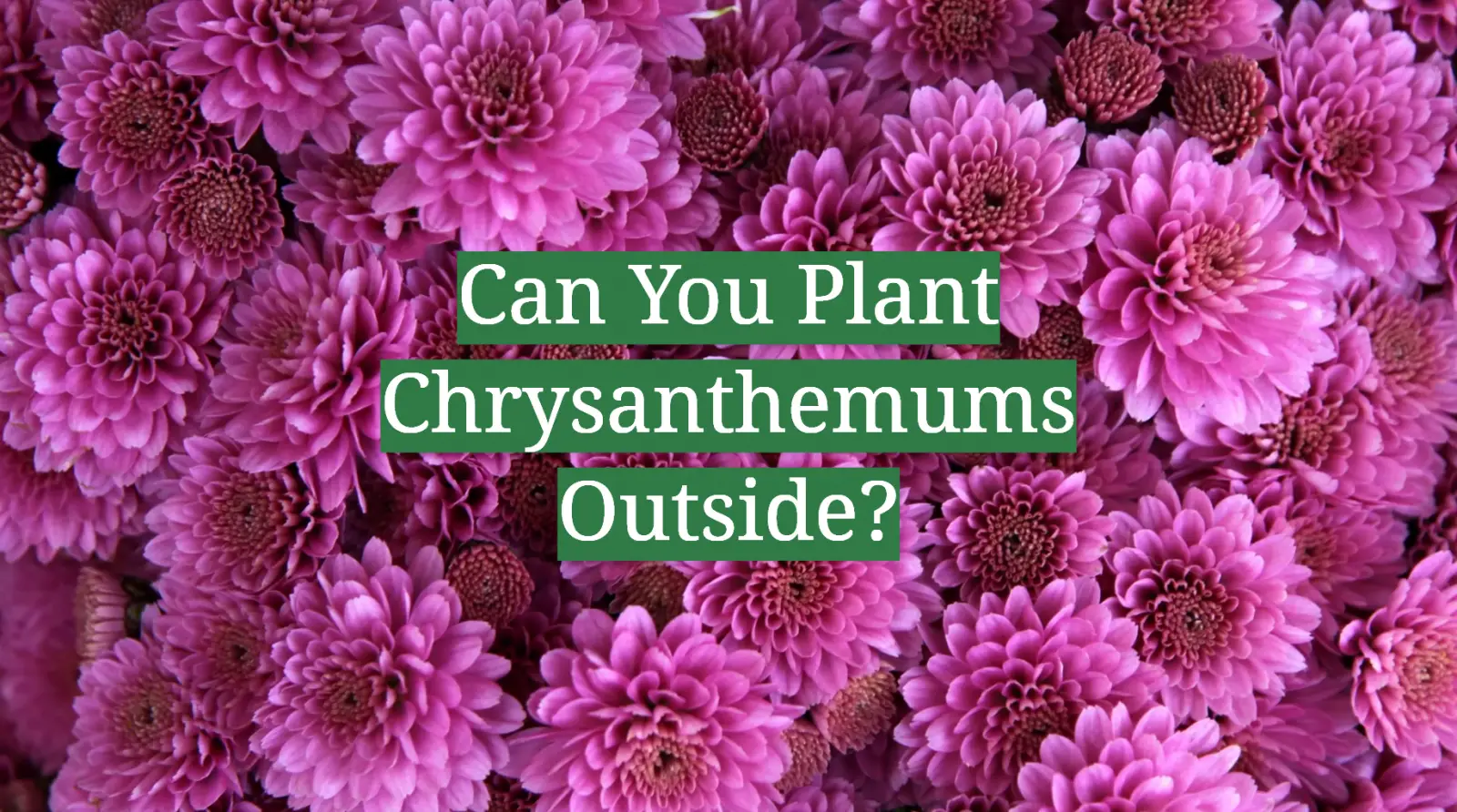
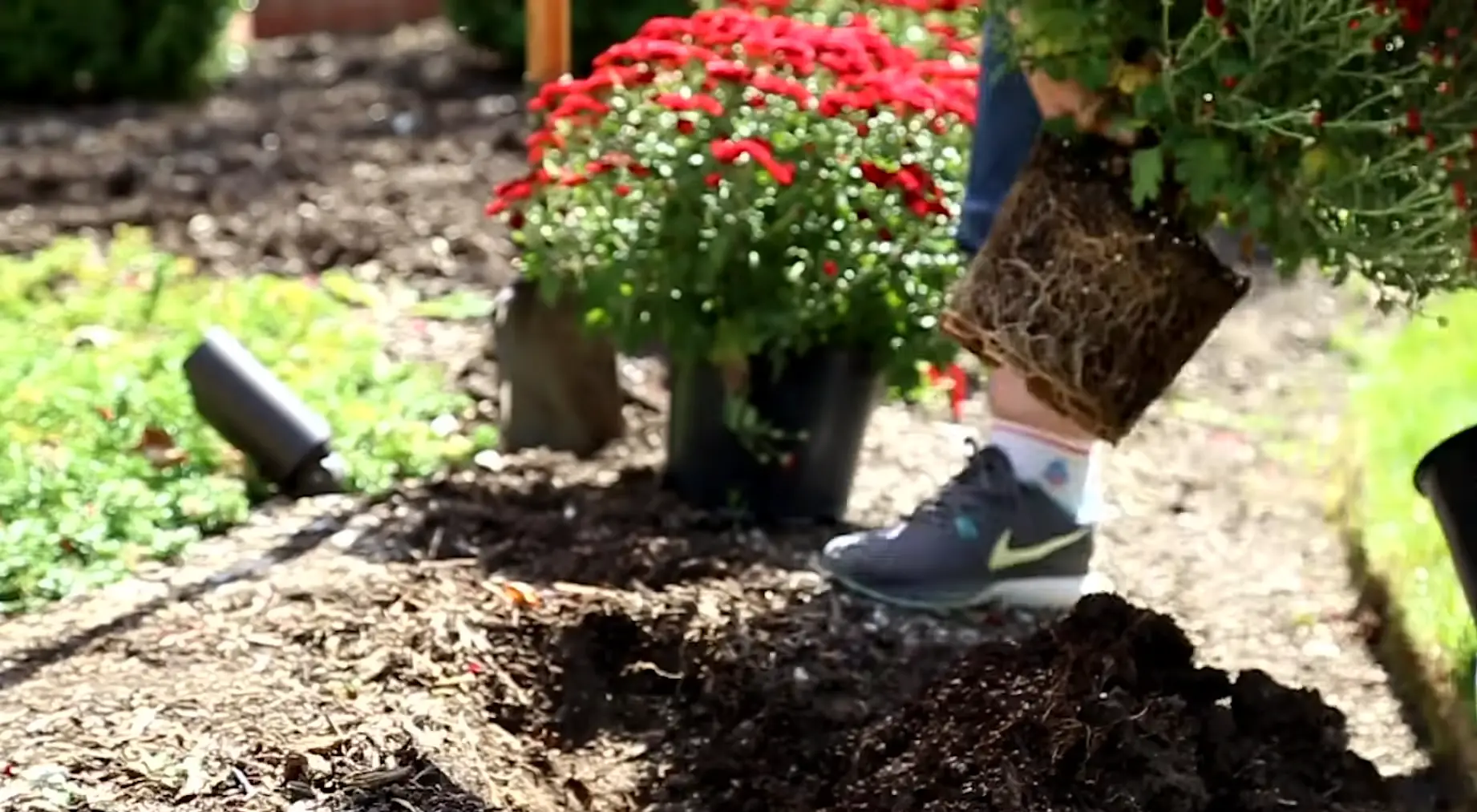
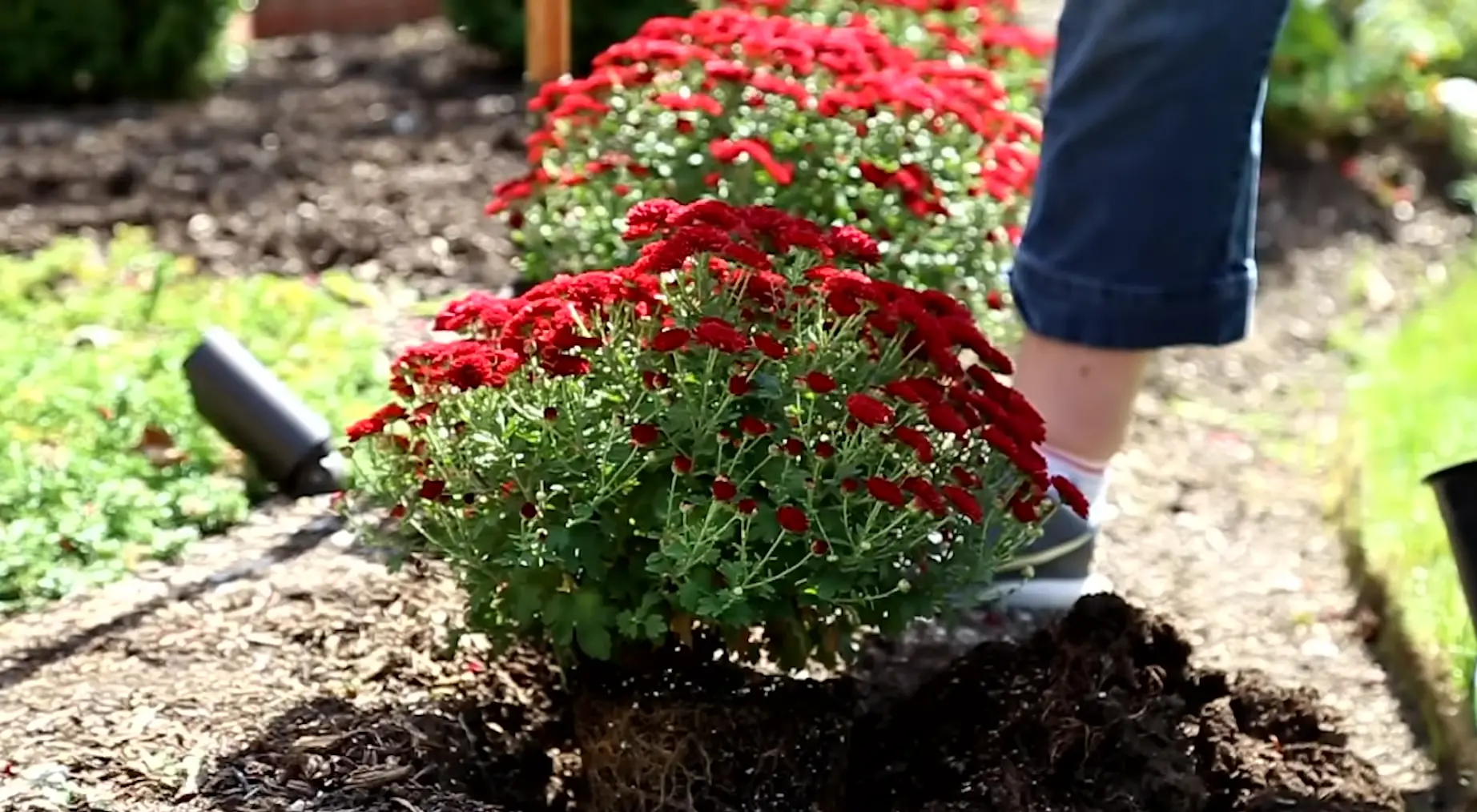
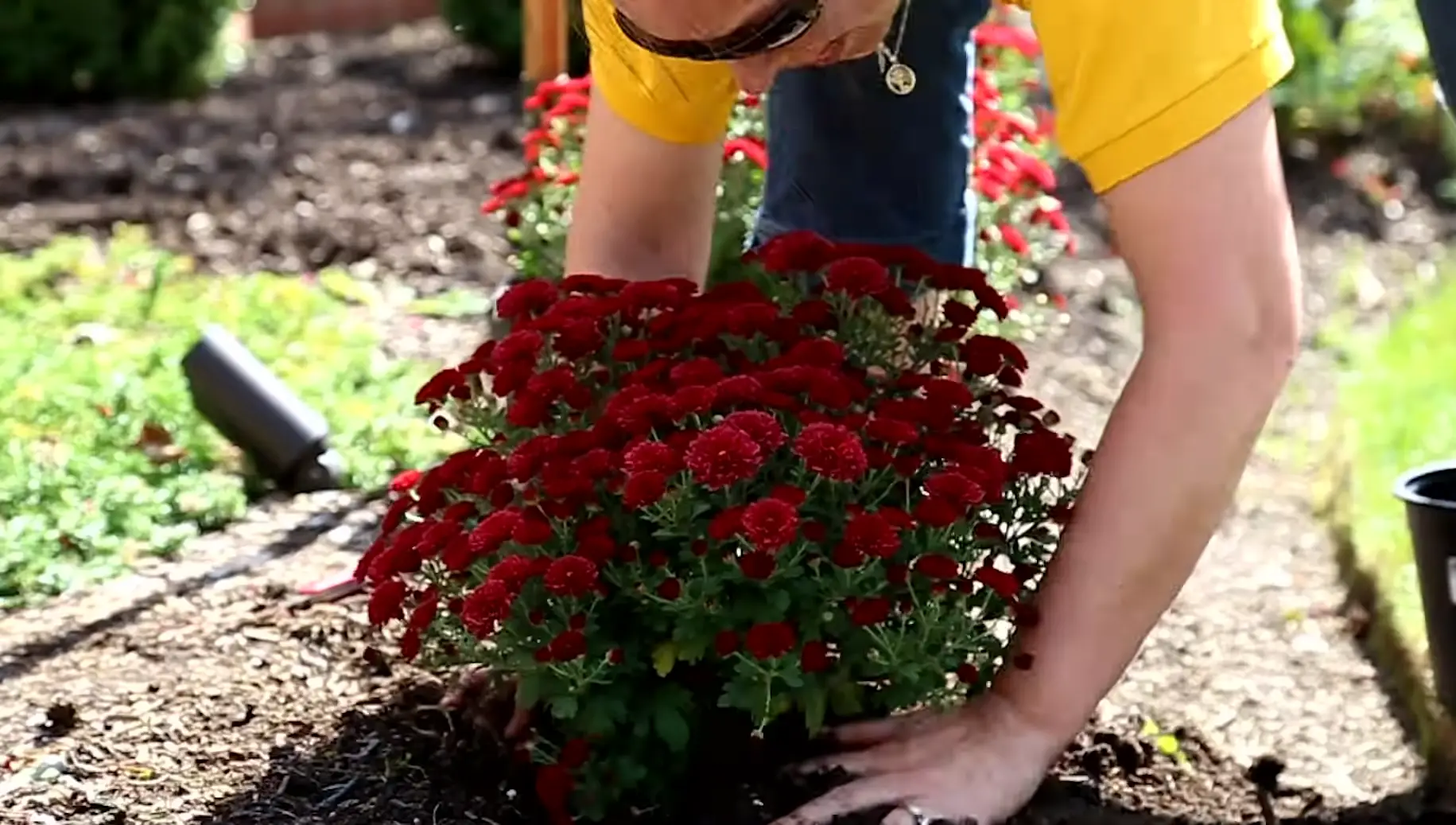
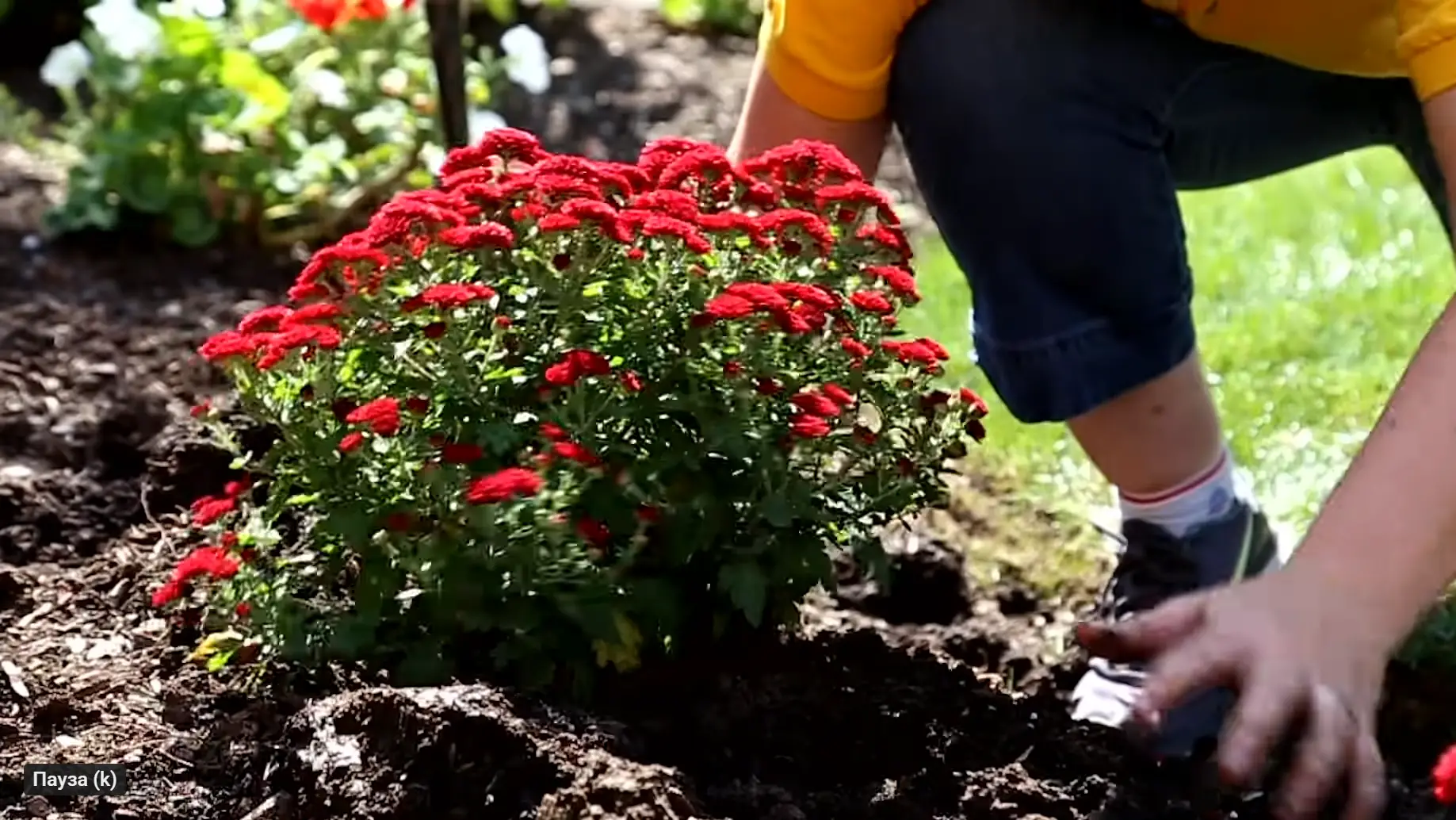
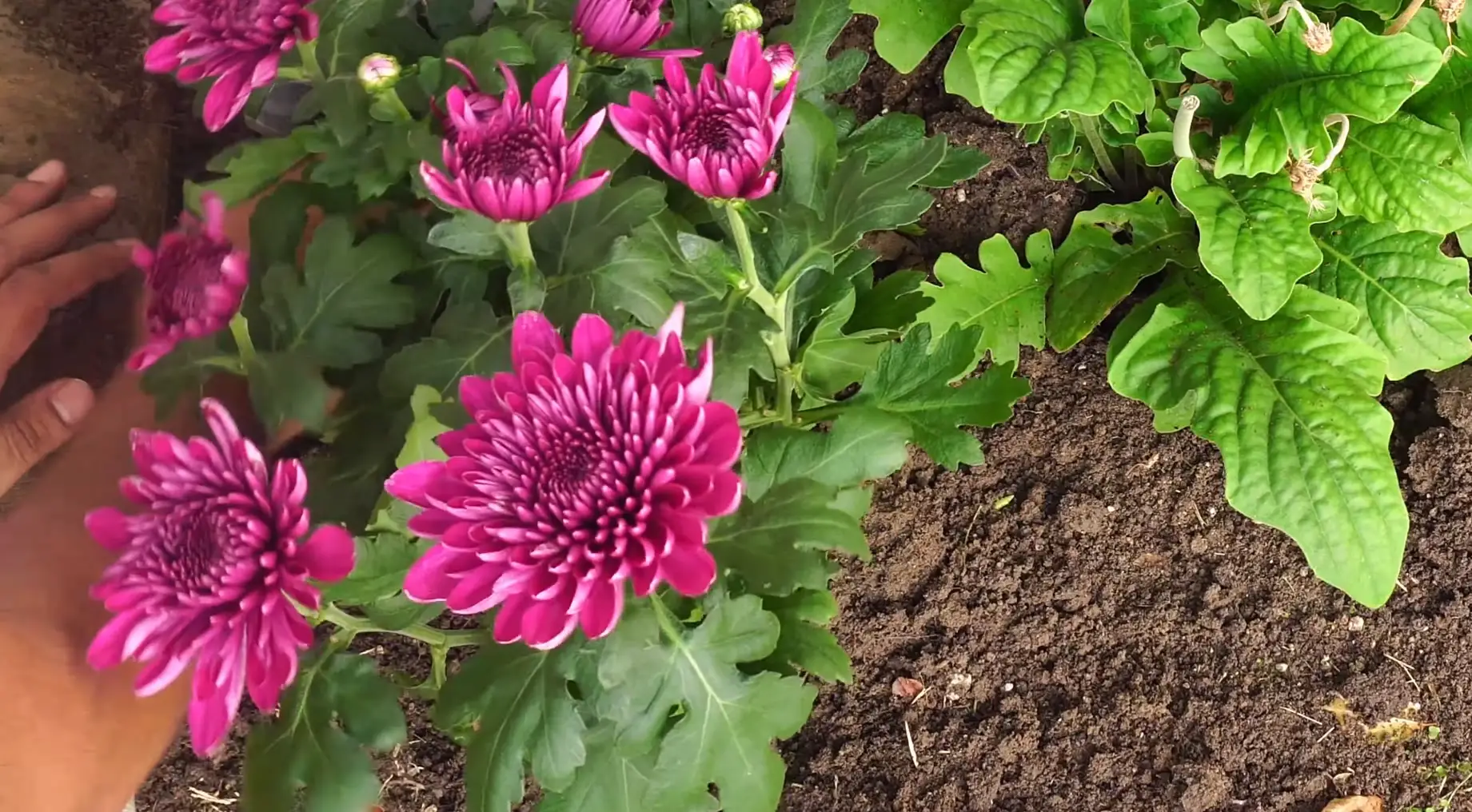
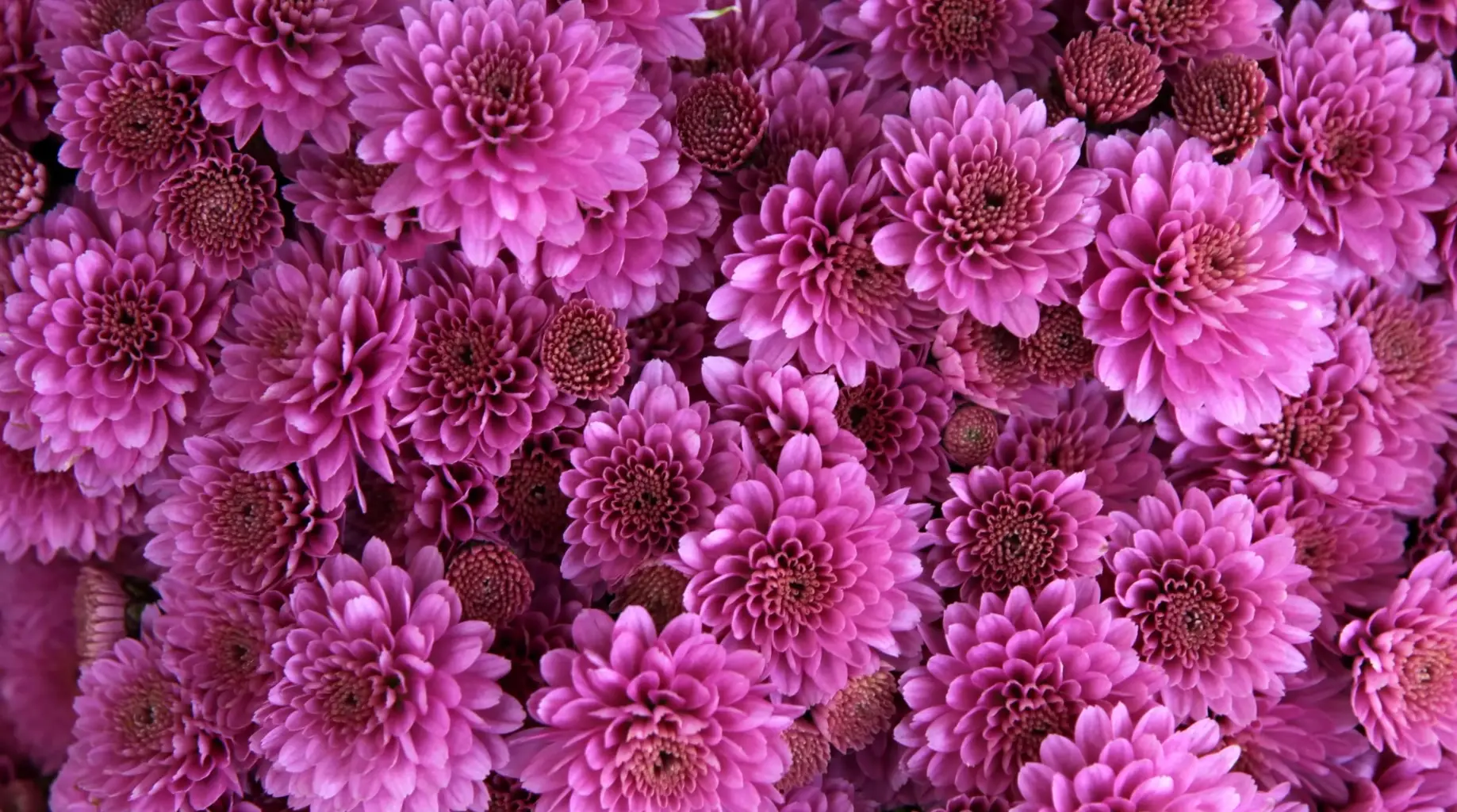




Leave a Reply
View Comments